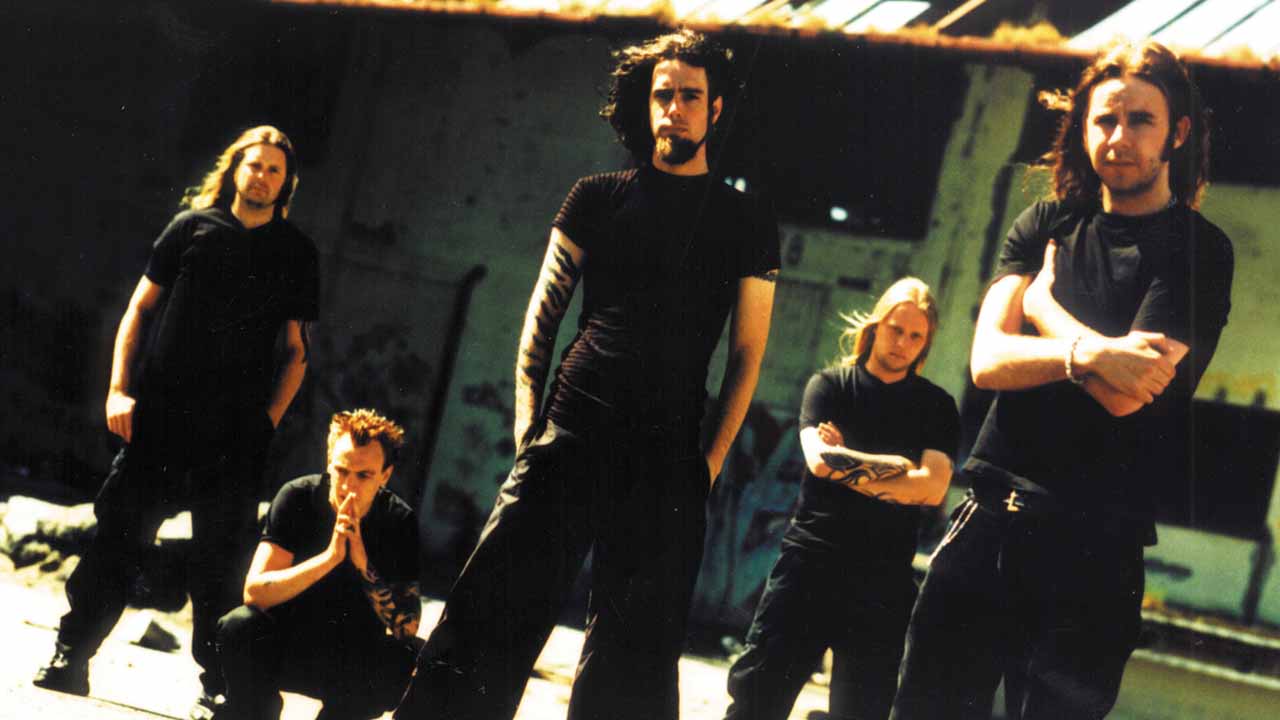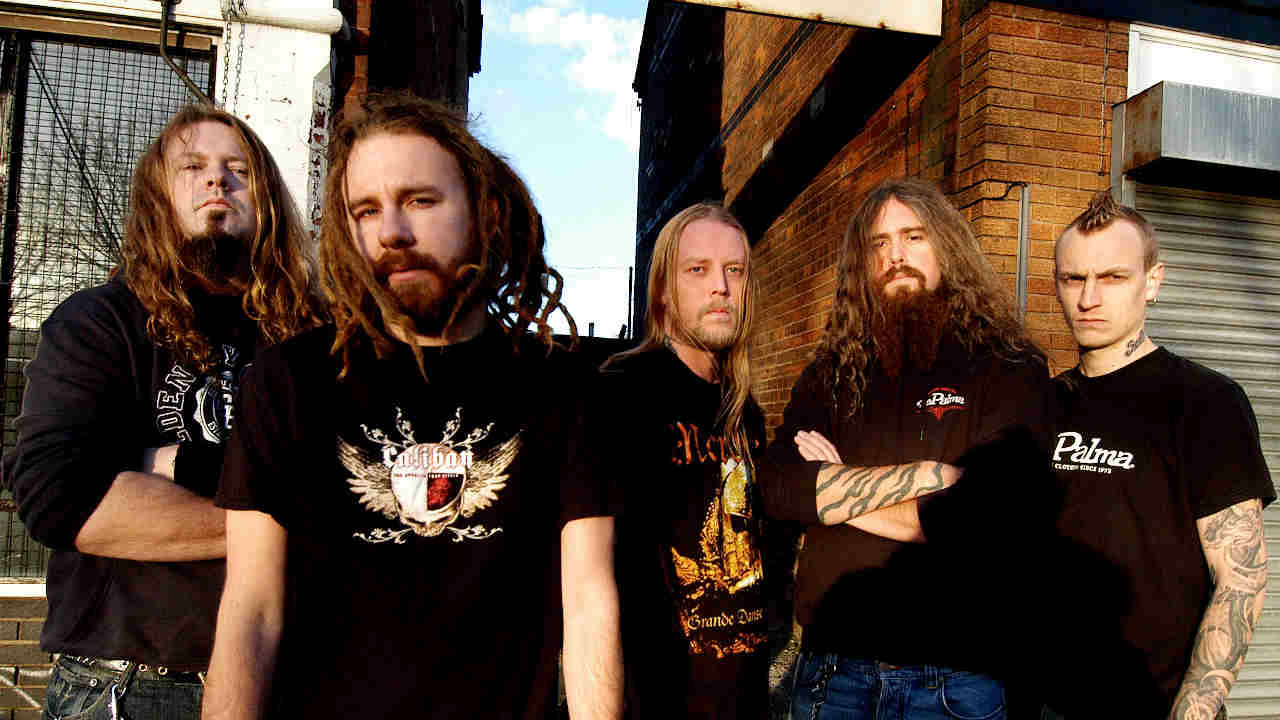“I have so many memories of this song,” In Flames frontman Anders Fridén smiles when asked about his band’s signature anthem, Only For The Weak. “The first one that comes to mind is when we played it at a festival in Gothenburg [Metaltown 2010]. It was being held next to a bridge between the city and the nearest island. We played the song and then the earthquake alarms on the bridge started ringing! They had to move the festival the next year because of that.”
Anders’ voice is bright with perverse pride as he nears the 20th anniversary of a track so powerful that it nearly destroyed millions of pounds’ worth of 1930s architecture. “That’s what you call a heavy song!” he quips happily, showing none of the apathy that some rockers develop towards numbers they’ve been playing night in, night out for decades.
“I mean… it’s awesome!” he adds with a chuckle. Yet, when asked why Only For The Weak holds such a reputation as a career standout, the singer’s merriment is replaced with careful thought. “You can’t really answer that,” he replies. “We never write a song so that people can go, ‘Bingo!’ – we try to write an album from beginning to end. Every song has to fit in within the album. It has to have a certain dynamic, a certain feel, in order to fit in with the one that comes next.”
Only For The Weak’s parent album is 2000’s similarly beloved Clayman, In Flames’ fifth full-length and, in many ways, a career-defining reinvention for the ascending Scandinavian stars. By the time the new millennium dawned, Anders and his four bandmates possessed the momentum of a rocket-propelled roadrunner. They’d earned notice continent-wide for their role in defining melodic death metal, pairing flashy, Iron-Maiden-inspired guitar licks with the speeding and growling savagery of Entombed and Dismember. 1999’s World Colonization tour had sent them to countries as far-flung as Japan and the USA. Plus, their early material was destined to inspire the West’s gargantuan metalcore movement, which would rule heavy music for much of the 2000s. This was all in spite of In Flames’ disjointed beginnings 10 years prior, initially as the side-muse of Ceremonial Oath bassist Jesper Strömblad, who yearned to explore a more harmonic direction away from the archetypical death metal sound.

Until 1995, Jesper was joined in his quest by a revolving door of hired guns – a list that is now a who’s-who of Swedish extremity. Included are future Arch Enemy drummer Daniel Erlandsson, HammerFall co-founder Johan Larsson and, most famously, Dark Tranquillity’s Mikael Stanne. It’s during this era that In Flames debuted with The Lunar Strain: an album that paired hallmarks of death and black metal with both NWOBHM and, even more esoteric, acoustic Scandinavian folk.
Anders – Ceremonial Oath’s former frontman – and drummer (later guitarist) Björn Gelotte entered the fray in time for 1996’s The Jester Race, where they have remained ever since. The sophomore effort knitted together Lunar Strain’s oft-fractured elements, refining a whole new breed of harmonic brutality. Between the subsequent Whoracle and Colony, In Flames finally established their first steady line-up, which would later continue through Clayman and last for more than 10 years.
“On Colony, we became really solid: Daniel [Svensson, drums], Jesper, Peter [Iwers, bass], Björn and myself,” remembers Anders. “We were feeling really good after that album and had had some great moments on tour. We were extremely hungry and high on momentum, and we were getting more recognition after The Jester Race, Whoracle and Colony. So, we put all of that in a melting pot and something great came out.”
In Flames had toured the world and released four albums in the past five years alone, though showed no sign of slowing down. They re-entered Studio Fredman with Fredrik Nordström (the same set-up as their last three recordings) in early 2000 and, despite the narrow timeframe, knew what they would create there was to be vastly different to what had come before.
“Jester Race, Whoracle and Colony were a trilogy,” reveals Anders. “They were all connected.” Together, the trio tell a Matrix-esque story about a dystopian future, where mankind succumbs to its own follies and ends up being overtaken by machinery.
“Jester Race is before, Whoracle is in the middle and then Colony is after,” Anders explains. “That’s the end! There’s nothing missing from that. So, I wanted to switch gears, and I wanted to switch gears a lot! I can’t write about Dungeons & Dragons and wars. I want to write about something where I know some shit!”
In Flames’ three prior albums critiqued the wider world, predicting a fatalistic future if it were to continue on its current course. Pulling a complete 180 for Clayman, Anders’ sharp and analytical lyricism turned inwards, exploring his own personal state and mental health. What he found was far less than ideal. “Even though the band had a lot of momentum, I was not in a great place personally,” he says. “While the band was on a roll, I was a mess.”
Although only in his 20s, the singer was stuck in a long-term relationship that was drawing to a tumultuous close. His personal life crumbled and he wrestled with “finding myself and my own place in the world”, through which he penned the words to what would become Only For The Weak. The track illustrates the toxic damage of two individuals deteriorating one another’s mental health: ‘I can’t tolerate your sadness/Because it’s me that you are drowning,’ Anders whispers in the song’s opening lines, later adding: ‘I adore and preach the insanity you gave to me.’
Meanwhile, the singer’s cohorts composed In Flames’ most melodic and clean-cut track yet. The high-flying, mile-a-minute riffs that had packed The Jester Race, Whoracle and Colony were eschewed in favour of more mid-paced and “chord-based” guitars – ideal stuff for getting a whole arena bouncing in unison. Synthesisers were introduced as well, and Anders sang cleanly more on this one song than on the last three albums put together. Intentional or not, Only For The Weak practically oozed ‘banger’.
“It was such a struggle in the studio,” the frontman recalls. “It’s very open and it’s a much slower song. It has such a groove to it. I wasn’t happy with the first few attempts; I was used to getting as many words as I can into a lyric and really screaming my lungs out, but this was so slow and [the singing] was a part of the melody in a different way.”
Its infectious bounce quickly made Only For The Weak a fixture of the In Flames setlist, where it has remained ever since. In the years since, its creators’ flirtations with the catchy side of heavy music have only grown stronger and stronger – to the point where death metal has now vanished from their soundscape altogether. It’s an evolution that’s come to the chagrin of many a longtime fan, but the irony is that In Flames’ most lauded anthem was what began that very shift.
“It feels like the middle ground between our old career and how we are now, even though we have made way more albums since then,” says Anders. “It’s on the album where we got more exposure, where we got proper tours for the first time supporting big bands. Going to the US and supporting a hardcore band like Earth Crisis and alt-metal bands, I think, gave us the confidence to start melding genres together.”
Clayman will enjoy a reissue in August to commemorate its 20th anniversary and Only For The Weak appears on it not once, but twice: firstly in its original form and then as a rerecording by In Flames’ current line-up.
“It’s not because we want to make the song better,” Anders is quick to emphasise. “It’s just because, so far, we haven’t celebrated anything. The Jester Race was the first one where I noticed the 20th anniversary had passed. And then Whoracle and Colony’s were gone. We saw someone online post, ‘It’s been 20 years now,’ and we just went, ‘Oh, shit!’ Ha ha ha! This is purely for us to have fun and celebrate this album turning 20.”
In 2020, Only For The Weak has the complicated legacy as the beginning of the end for In Flames as a death metal band. Clean singing begins to replace growling; accessible chords begin to replace complex guitar leads; themes of personal turmoil begin to replace social satire. However, it also stands the test of time as a message against elitism, and of the reverence that extreme metal can enjoy when it’s unafraid to dip a toe into the world of the user-friendly.
“It’s a song that has a heavy tone to it, but it’s not difficult to like.” Anders concludes, that proud tone of voice returning once again. “It brings everyone together.”

